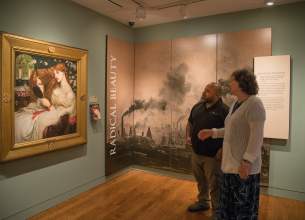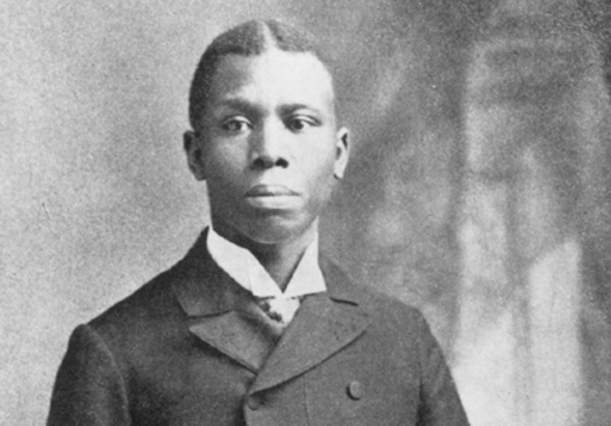Paul Laurence Dunbar was one of the most influential African American poets of the late 19th and early 20th centuries. His literary works, rich in themes of racial identity, struggle, and perseverance, offered a voice to Black Americans during a time when their stories were often overlooked. Among his many poems, Black Samson of Brandywine stands out as a striking tribute to an unsung African American hero of the American Revolution. This poem not only highlights the contributions of Black patriots to the war effort but also connects deeply to the broader themes of freedom and sacrifice that defined the era.
Paul Laurence Dunbar: A Literary Pioneer
Born in 1872 in Dayton, Ohio, Paul Laurence Dunbar was the son of formerly enslaved parents. His upbringing profoundly influenced his literary career, as he explored themes of Black resilience, heritage, and the complexities of racial identity in post-Reconstruction America. Though his early work gained recognition with the 1893 World’s Columbian Exposition and subsequent publications such as Oak and Ivy (1893) and Majors and Minors (1895), it was his collection Lyrics of Lowly Life (1896) that catapulted him to national fame. Dunbar's poetry ranged from dialect-heavy verse that captured the everyday experiences of Black Americans to eloquent standard English compositions that showcased his mastery of traditional poetic forms.
One of his lesser-known yet powerful works is Black Samson of Brandywine, a poem that pays homage to Black soldiers who fought in the American Revolution, particularly one legendary figure—Samson, a towering warrior whose story remains largely untold in mainstream history.
"Black Samson of Brandywine": A Poetic Tribute to an Unsung Hero
Dunbar’s poem Black Samson of Brandywine tells the story of a Black man who fought with unparalleled courage in the Battle of Brandywine, one of the most significant battles of the American Revolution. This battle, fought on September 11, 1777, in Pennsylvania, saw General George Washington’s troops attempt to halt British advances. While the battle ultimately ended in a loss for the Continental Army, it was a testament to the resilience of the revolutionary forces.
In the poem, Black Samson is depicted as a fierce and mighty warrior, towering above his peers in strength and determination. Dunbar paints a vivid picture of Samson as a man whose mere presence on the battlefield commanded respect and fear. He fights with unmatched fury, wielding his weapon against the British forces in defense of the cause of liberty. Ultimately, Samson meets his tragic end on the battlefield, a martyr for a country that had yet to grant full freedom to Black Americans.
The poem serves as both a lamentation and a celebration of Black contributions to the American Revolution. Through his vivid imagery and emotionally charged language, Dunbar elevates Samson to the status of a mythical hero, ensuring that his sacrifice is not forgotten.
African Americans in the American Revolution
The story of Black Samson reflects the broader, often overlooked history of African Americans in the Revolutionary War. It is estimated that between 5,000 and 9,000 Black soldiers served in the Continental Army and Navy, fighting for the promise of freedom and equality. Many of these individuals, both enslaved and free, saw the war as an opportunity to stake their claim to liberty in a nation founded on the ideals of independence.
However, the American Revolution presented a paradox for Black Americans. While the Patriots fought against British tyranny, many of them simultaneously upheld the institution of slavery. Some enslaved individuals sought freedom by joining the British Army, which, under Lord Dunmore’s Proclamation of 1775, promised emancipation to those who took up arms against the revolutionaries. Others, like Black Samson, fought alongside the American forces, hoping their service would lead to greater rights and recognition.
One of the most famous Black soldiers of the Revolution was Peter Salem, who played a pivotal role in the Battle of Bunker Hill. Similarly, James Armistead Lafayette served as a spy for the Continental Army, providing crucial intelligence that helped secure American victory at Yorktown. These stories, like that of Black Samson, remind us that African Americans were deeply intertwined with the struggle for independence.
The Enduring Legacy of "Black Samson of Brandywine"
Dunbar’s Black Samson of Brandywine serves as a powerful reminder of the sacrifices made by Black soldiers in the American Revolution. The poem’s themes of bravery, sacrifice, and unrecognized heroism continue to resonate today. While history has often marginalized the contributions of African Americans in early American conflicts, Dunbar’s work ensures that figures like Black Samson are immortalized in literary and historical consciousness.
By revisiting this poem, we gain not only an appreciation for Dunbar’s literary genius but also a deeper understanding of the complexities of race and identity in America’s founding era. The poem challenges us to remember those who fought for a freedom that was not immediately granted to them, urging us to acknowledge their place in the nation’s history.
As we approach the 250th anniversary of the American Revolution in 2026, Black Samson of Brandywine reminds us that this war was fought by many, including those whose stories have been long overshadowed. Black Samson's tale is just one among many, and commemorating these diverse contributions ensures a more complete and inclusive understanding of America’s fight for independence.






